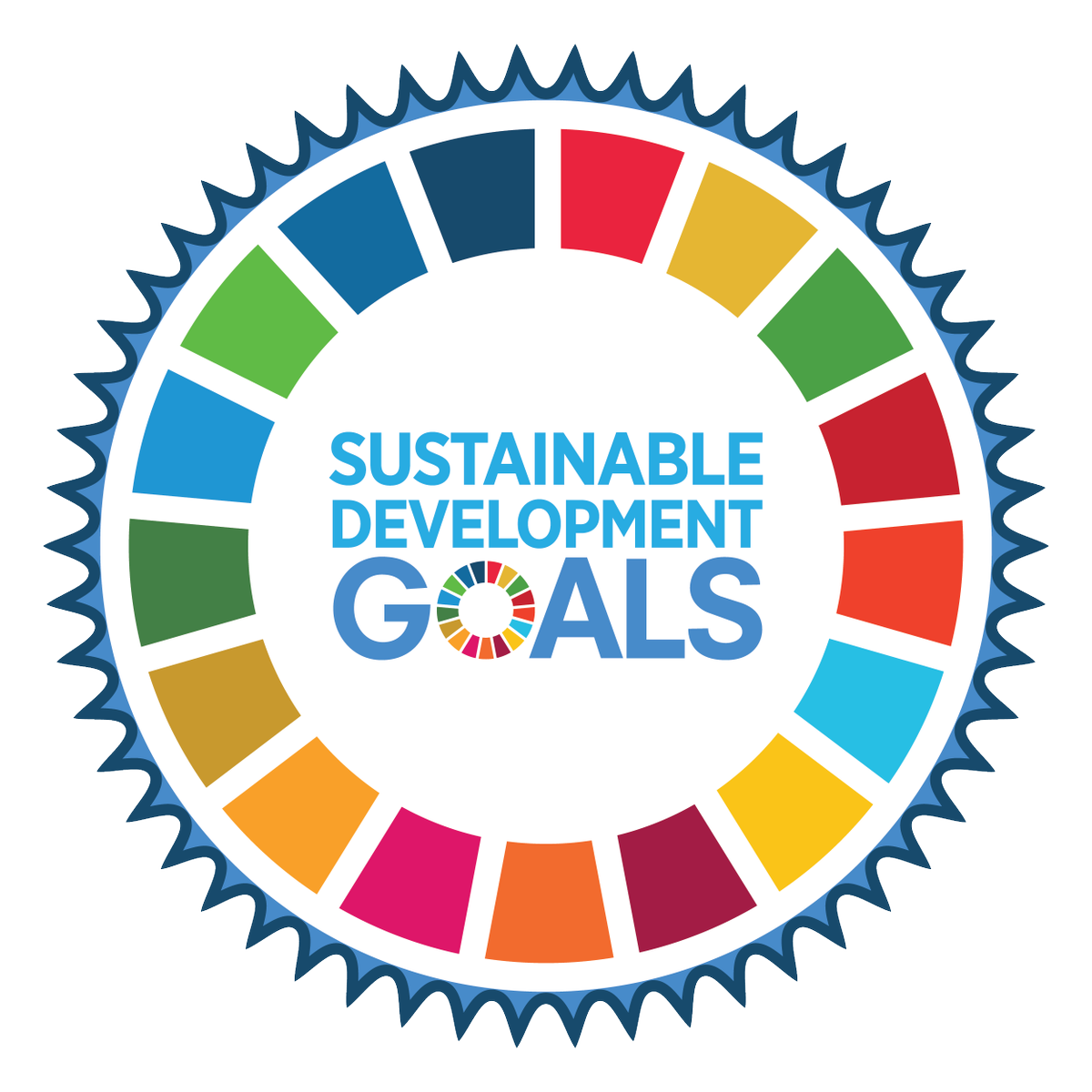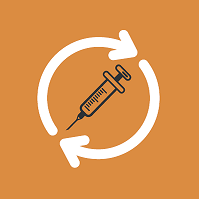Meeting people where they are: harm reduction and access to healthcare
Published in Healthcare & Nursing, Social Sciences, and General & Internal Medicine

A core principle of the harm reduction approach to public health is recognising the realities of people’s lives and meeting them where they are. Accepting that health-related behaviours occur in complex contexts and designing programmes that reduce the negative outcomes, rather than changing the behaviour itself.
In practice, this principle is about reducing barriers to care, offering support without preconditions, and ensuring that services are adapted to be accessible to people who might otherwise remain excluded. Harm reduction approaches have been widely implemented in the context of drug use, but the concept is increasingly applied to other areas such as gambling, sex work and online spaces.
The Sustainable Development Goals and access to healthcare
 UN Sustainable Development Goal 3.8 describes the importance of universal health coverage; however, this coverage is critical to meeting all the targets within SDG 3. For example, reducing the global maternal mortality ratio (Goal 3.1) will not be possible if maternal healthcare is only available to a fraction of people.
UN Sustainable Development Goal 3.8 describes the importance of universal health coverage; however, this coverage is critical to meeting all the targets within SDG 3. For example, reducing the global maternal mortality ratio (Goal 3.1) will not be possible if maternal healthcare is only available to a fraction of people.
Goal 3.8 also mentions access to quality essential services. The distinction between coverage and access is an important one; access does not simply mean that a service exists, but that people also feel confident in using it. Access requires that people can approach healthcare services without fear of stigmatisation or discrimination, that they are culturally appropriate, and that they align with the lived experiences of people who need them most.
Barriers to access can arise when assumptions about people manifest in the design of healthcare systems and programmes. Assumptions about cultural norms or the stability of people’s lives can erode healthcare uptake even when willingness to engage is high. Assumptions about what people want from healthcare can erode willingness altogether.
Harm reduction aims to offer an alternative: pragmatic, rights-based, and user-centred strategies that create openings into care rather than locking people out.
Why access can be difficult for people who use drugs
Stigmatisation
Stigma is one of the most significant barriers to healthcare access and can manifest structurally (laws, funding models, institutional policies) as well as interpersonally (the prejudice someone might experience from their community). People who use drugs frequently report experiences of judgement, dismissal, or outright denial of care within mainstream medical settings. This can be more pronounced for people belonging to marginalised communities. Stigma leads to anticipation of negative treatment and can prevent individuals from seeking care until emergencies arise. This is not unique to drug use: gambling disorder, for example, is similarly marked by shame and secrecy, which restricts engagement with health professionals.
Institutional distrust
Beyond stigma, there is a deeper issue of institutional distrust (related to SDG 16: Peace, Justice and Strong Institutions). Communities impacted by punitive drug policies, disproportionate policing, or coercive treatment will understandably approach healthcare systems with suspicion. The opioid crisis in the US is now a textbook example of how medical and regulatory systems can lose credibility. Beyond that, criminalisation of drug use and, in some cases, referrals to social or police services from a hospital setting reinforces the perception that healthcare is an extension of police surveillance and control. Without efforts to build trust, service uptake will remain low.
Mismatch between needs and services
Healthcare systems often take a one-size-fits-all approach to maximise how far their budget goes, but this neglects the diversity of people who use drugs and their needs. Services designed for young people may not suit older adults living with long-term opioid dependence. Programmes that ignore cultural identity, language, or local social networks may end up excluding those most in need. In some cases, service models fail to adapt to the realities of early drug taking (i.e., accepting that drug use can be recreational and not always inherently harmful) and make it harder for young people to access non-judgemental and confidential care. Austerity measures and efficiency-driven healthcare exacerbate this mismatch.
Policy environments
Policy frameworks often shape access to healthcare in the context of substance use. In the US, cannabis may be legal at the state level but remains prohibited at the federal level, creating confusion and disarray around the services provided to mitigate harms. Federal illegality in the US also limits insurance coverage, research funding, and banking access for cannabis services. In contrast, some European countries integrate harm reduction within national health systems and make low-threshold services more accessible. Where drug use is heavily criminalised, people are less likely to engage with healthcare providers for fear of legal repercussions.
|
Journal Impact Factor 2023: 4.0 Number of readers in 2024: 2.1M |
Submission to 1st decision: 4 days Submission to acceptance: 162 days |
Principles and implementation of harm reduction
Harm reduction reframes healthcare access through three principles and can help community programmes function as trusted entry points to broader health systems:
- Pragmatism: Accepting that drug use exists and focusing on minimising harms rather than demanding abstinence.
- User-led design: Placing lived experience at the centre of services, e.g. peer-to-peer education and support networks.
- Rights-based practice: Treating healthcare as a right rather than a privilege, emphasising dignity, autonomy, and empowerment.
Prevention: low-threshold interventions
 Prevention in harm reduction does not mean preventing drug use altogether, but rather preventing illness, injury, and premature death.
Prevention in harm reduction does not mean preventing drug use altogether, but rather preventing illness, injury, and premature death.
- Syringe service programmes (SSPs): Offering sterile equipment, safe disposal, and education. No questions asked. SSPs not only reduce the spread of infectious diseases like HIV, but also serve as points of connection to primary care.
- Supervised consumption sites: Allowing people to use drugs in hygienic environments, under trained staff supervision. These facilities reduce overdose deaths and can provide immediate links to treatment.
- Naloxone distribution and overdose education: Placing lifesaving tools directly in the hands of communities so they can take care of themselves when drug taking goes wrong.
- Drug checking services: Enabling people to identify adulterants such as fentanyl, which significantly increases overdose risk.
All of these interventions “meet people where they are.” They remove conditions of abstinence, do not require engagement with law enforcement, and build trust incrementally.
Treatment: integrating care pathways
Harm reduction does not end at prevention. For those who seek treatment, integration of harm reduction into healthcare delivery improves both uptake and outcomes.
- Medication for opioid use disorder (MOUD): These serve to help manage withdrawal, prevent overdose and increase the likelihood that someone will continue to not use drugs. Access to medications like buprenorphine or methadone remains uneven globally, but voluntary programmes that link prescription with other harm reduction services reduce barriers to care.
- Counselling and peer recovery coaches: Embedding peer support within treatment ensures that programmes remain credible, effective and non-judgemental.
- Wound care and infectious disease testing: Providing low-threshold health services alongside harm reduction creates multiple points of entry into care and reinforces trust that the system can serve people’s needs.
- Warm handoffs: Direct referrals between harm reduction programmes and mainstream health services reduces the risk of clients being lost in the system.
In some European cities, supervised consumption sites offer on-site HIV testing; in parts of North America, mobile harm reduction vans provide wound care alongside naloxone distribution. These small design choices can make the difference between exclusion and engagement.
Intersectionality and social determinants
It’s important to note that health outcomes do not exist in isolation. The intersection of drug use with other social factors – housing, domestic violence, maternal and child health, employment, education – makes holistic approaches to care more effective. Community harm reduction programmes can serve this need and facilitates entry into other prevention and treatment pathways:
- On-site supports: Offering childcare during treatment appointments, integrating housing case management into harm reduction centres, or providing food and hygiene resources.
- Referral networks: Connecting clients (not patients, more below) to services beyond the immediate scope of drug use and healthcare, ensuring that structural drivers of harm are not ignored.
Addressing pushbacks and language
Myth: "Harm reduction enables drug use"
A common critique is that harm reduction encourages drug use. Research consistently disproves this claim. Syringe services, supervised consumption sites, and MOUD do not increase drug initiation or frequency of use; rather, they reduce morbidity and mortality and often serve as bridges to more treatment. Harm reduction is not permissive, it is preventive.
Language matters
Language is itself a barrier to healthcare. Terms such as “addict” or “clean” reinforce stigma and deter engagement. People-first language (e.g. “person who uses drugs”) is more accurate and respectful. Guidance from organisations such as the International Network of People who Use Drugs (INPUD) or the National Harm Reduction Coalition provides clear resources on how to communicate without perpetuating stigma.
Going beyond drug use
While harm reduction is most associated with drug use, similar principles apply in other areas to improve access to care:
- Gambling: Self-exclusion tools and financial counselling help reduce harm without demanding abstinence.
- Sex work: Access to sexual health services and protection from violence are critical harm reduction strategies.
- Online spaces: Digital platforms can reduce isolation by connecting people with peer support, but they also raise new challenges around misinformation and risk exposure.
Harm reduction demonstrates that access to healthcare is not solely about infrastructure or healthcare provision, but about approaching systems design with trust and respect. Meet people where they are, recognise systemic inequalities, address stigma and offer pragmatic routes to healthcare.
By embedding harm reduction into research, policy, and practice, the global community can move closer to health systems that are truly accessible (and work towards meeting the SDGs effectively).
Follow the Topic
-
Harm Reduction Journal

This journal publishes research and commentary on approaches diminishing the harm of stigmatization, marginalization and criminalization of public health, human rights and social justice issues, as well as rebuking the de facto criminalization of marginalized and stigmatized communities.
Related Collections
With Collections, you can get published faster and increase your visibility.
Indigenous communities and harm reduction
Indigenous peoples, defined as the original inhabitants of lands with longstanding cultural, political, and spiritual ties that predate colonization, face unique challenges that stem from historical injustices, social marginalization, and systemic discrimination. These factors create complex environments where public health, human rights, and social justice intersect. By deepening our understanding of these challenges, we not only enrich academic discourse, but also pave the way for more effective, culturally relevant harm reduction strategies that resonate with Indigenous communities.
Significant advances have already been made in understanding the specific needs and realities of Indigenous communities concerning harm reduction. For instance, the integration of traditional healing practices with contemporary harm reduction strategies has demonstrated promising outcomes. Indigenous-led research initiatives have brought forth unique insights into the effectiveness of harm reduction programs tailored to the cultural and social contexts of Indigenous peoples. Furthermore, collaborative partnerships between Indigenous organizations and public health entities have begun to reshape policy discussions, ensuring that Indigenous voices are front and center in the formulation of harm reduction strategies.
However, there is still much work to be done. The future of this research area holds immense potential for transformative change. By continuing to explore the intricate relationships between Indigenous identities, cultural practices, and harm reduction, we can anticipate the development of innovative, community-driven programs. These programs could harness the power of Indigenous knowledge systems to inform public health approaches, fostering resilience and healing in the face of adversity. Advancements in technology may also allow for more nuanced data collection and analysis, enabling a deeper understanding of the lived experiences of Indigenous individuals and communities.
Topics of interest within this Special Collection on Indigenous communities and harm reduction include, but are not limited to:
● Traditional healing and harm reduction
● Culturally competent care
● Patterns of substance use
● Policy impacts on Indigenous health
● Collaborative research methodologies
● Historical trauma and recovery.
● Indigenous rights and harm reduction
● Community-led initiatives
● Community-based participatory research/methods
● Public health vending machines
● Stimulant use and associated harm reduction strategies
● Indigenous-led syringe services programs
● Indigenous-led models and “culture-as-healing” in harm reduction
● Sovereignty, criminalization, and decolonizing policy & practice
● Youth, kinship, and intergenerational harm reduction
● Methods/metrics: Indigenous data sovereignty, CBPR, and evaluation
● Access in rural/remote settings: SSPs, MOUD, telehealth, & mobile care.
This Collection supports and amplifies research related to SDG 3, Good Health and Well-Being and SDG 10, Reduced Inequalities.
All submissions in this collection undergo the journal’s standard peer review process. Similarly, all manuscripts authored by a Guest Editor(s) will be handled by the Editor-in-Chief. As an open access publication, this journal levies an article processing fee (details here). We recognize that many key stakeholders may not have access to such resources and are committed to supporting participation in this issue wherever resources are a barrier. For more information about what support may be available, please visit OA funding and support, or email OAfundingpolicy@springernature.com or the Editor-in-Chief.
Publishing Model: Open Access
Deadline: Sep 01, 2026
Repairable damage: harm reduction and US policy
Recent shifts in US policy and the approach to public health have placed renewed pressure on communities that already face significant health and social challenges. Policy decisions increasingly prioritize criminalization or abstinence-based strategies over interventions that have been consistently shown to reduce harm. These choices reflect a broader trend of sidelining empirical evidence, with real-world consequences for public health.
As a result, morbidity and mortality have increased among people who use drugs, experience homelessness, or who are involved in the US criminal justice system. Rates of preventable illness and infectious disease are also rising. Rhetoric and stigma further undermine public trust and discourage engagement with health services, disproportionately affecting marginalized populations.
Harm Reduction Journal has commissioned a collection of articles to highlight how evidence-based harm reduction strategies – grounded in science, dignity and practical outcomes – can inform more effective, humane public health responses.
This Collection supports and amplifies research related to SDG 3, Good Health and Well-Being, SDG 5, Gender Equality, SDG 10, Reduced Inequalities, and SDG 16, Peace, Justice and Strong Institutions.
All submissions in this collection undergo the journal’s standard peer review process. Similarly, all manuscripts authored by a Guest Editor(s) will be handled by the Editor-in-Chief. As an open access publication, this journal levies an article processing fee (details here). We recognize that many key stakeholders may not have access to such resources and are committed to supporting participation in this issue wherever resources are a barrier. For more information about what support may be available, please visit OA funding and support, or email OAfundingpolicy@springernature.com or the Editor-in-Chief.
Publishing Model: Open Access
Deadline: Aug 18, 2026






Please sign in or register for FREE
If you are a registered user on Research Communities by Springer Nature, please sign in